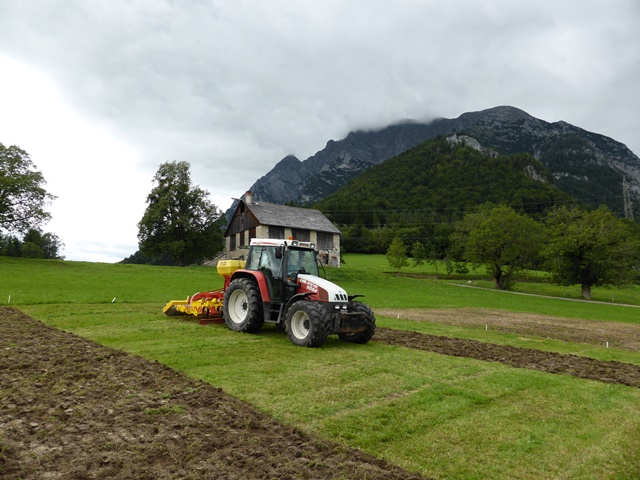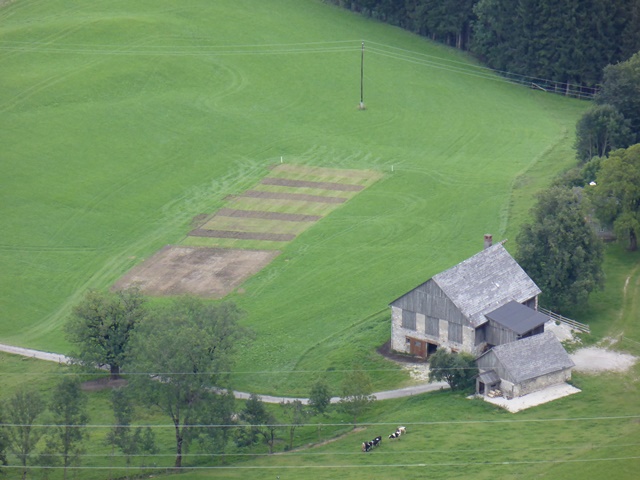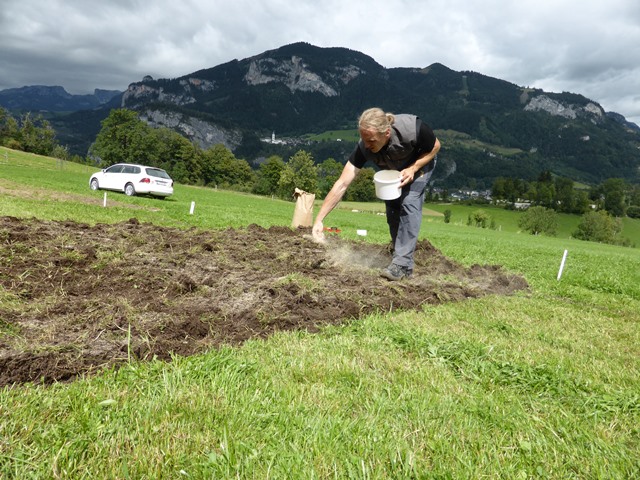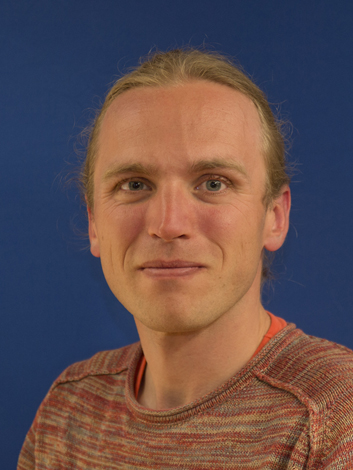 Intensively used grassland is characterized by a high cutting frequency (more than three uses per year) and a high nutrient turnover. Since needs-based and frequent fertilization is necessary in such areas, nutrient indicators (e.g. blunt-leaved dock or umbelliferous plants) may appear more frequently in patchy stands. In addition to undesirable herbaceous plants, matting grasses such as common panicle can also become a problem in such nutrient-rich locations.
Intensively used grassland is characterized by a high cutting frequency (more than three uses per year) and a high nutrient turnover. Since needs-based and frequent fertilization is necessary in such areas, nutrient indicators (e.g. blunt-leaved dock or umbelliferous plants) may appear more frequently in patchy stands. In addition to undesirable herbaceous plants, matting grasses such as common panicle can also become a problem in such nutrient-rich locations.
To ensure that there are no gaps in the crop, a dense turf is the only way to get such problems under control, since almost all approved regulatory means cannot be used in organic farming. From a botanical and morphological point of view, only the undergrasses are able to produce a dense turf. Therefore, the ultimate goal of this research project is to promote the proportion of undergrasses, and in particular meadow bluegrass and ryegrass, and to increase the proportion in the population to over 40%. The meadow bluegrass in particular occurs in insufficient quantities in intensively used cut meadows. This is certainly due to the fact that the young plants are still very weak in competition and take a long time to germinate. For this reason, this experiment is looking for a method of sowing that is as friendly to meadow grass as possible. It is known from the pasture trials of the Bio-Institut at the LFZ Raumberg-Gumpenstein that the meadow bluegrass can persist in the population in the long term after it has been successfully established. As long as fertilization and use are tailored to the stock.
The meadow bluegrass in particular occurs in insufficient quantities in intensively used cut meadows. This is certainly due to the fact that the young plants are still very weak in competition and take a long time to germinate. For this reason, this experiment is looking for a method of sowing that is as friendly to meadow grass as possible. It is known from the pasture trials of the Bio-Institut at the LFZ Raumberg-Gumpenstein that the meadow bluegrass can persist in the population in the long term after it has been successfully established. As long as fertilization and use are tailored to the stock.
A well-developed, grassy meadow stand should not only be able to keep out unwanted plants, but should also deliver optimal and stable quantity and quality yields. Therefore, another goal of this project is to achieve yields that are possible in usual, intensively used cutting meadows, even though the stands have little to no high-yield top grasses.
This is intended to fulfill a central basic requirement of organic farming for high-quality and ruminant-friendly basic feed that helps save concentrated feed. This is an important step towards resource-efficient organic farming.

Stock improvement on grassland
HBLFA Raumberg-Gumpenstein





